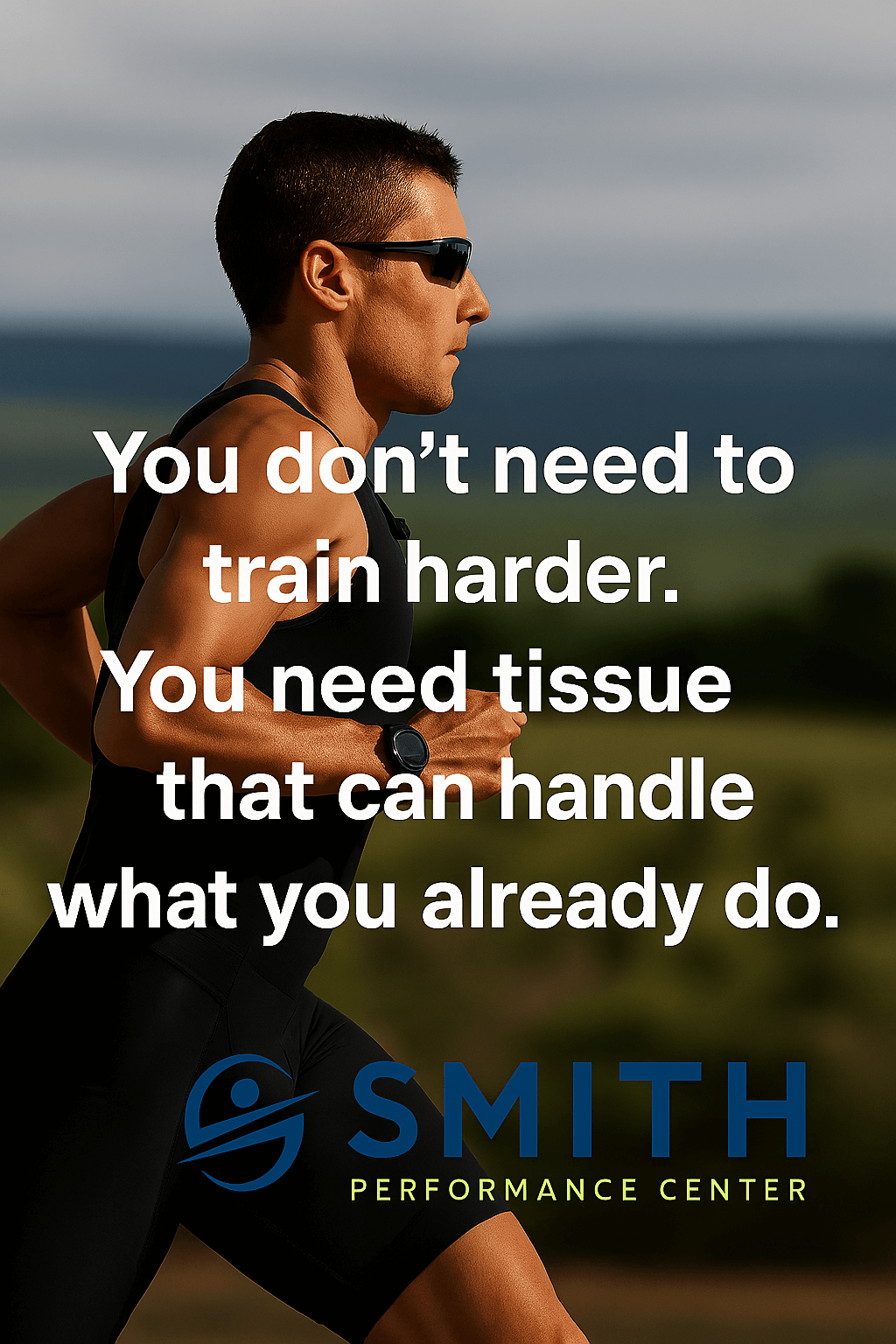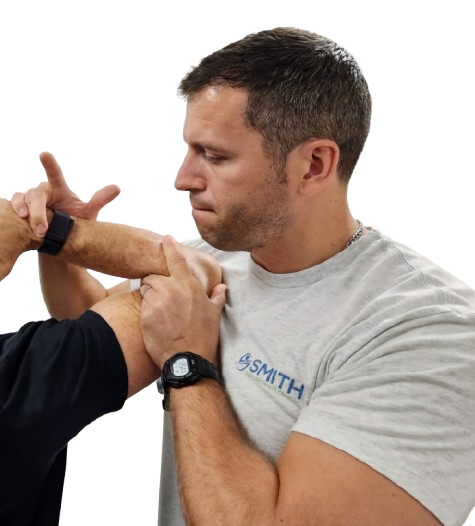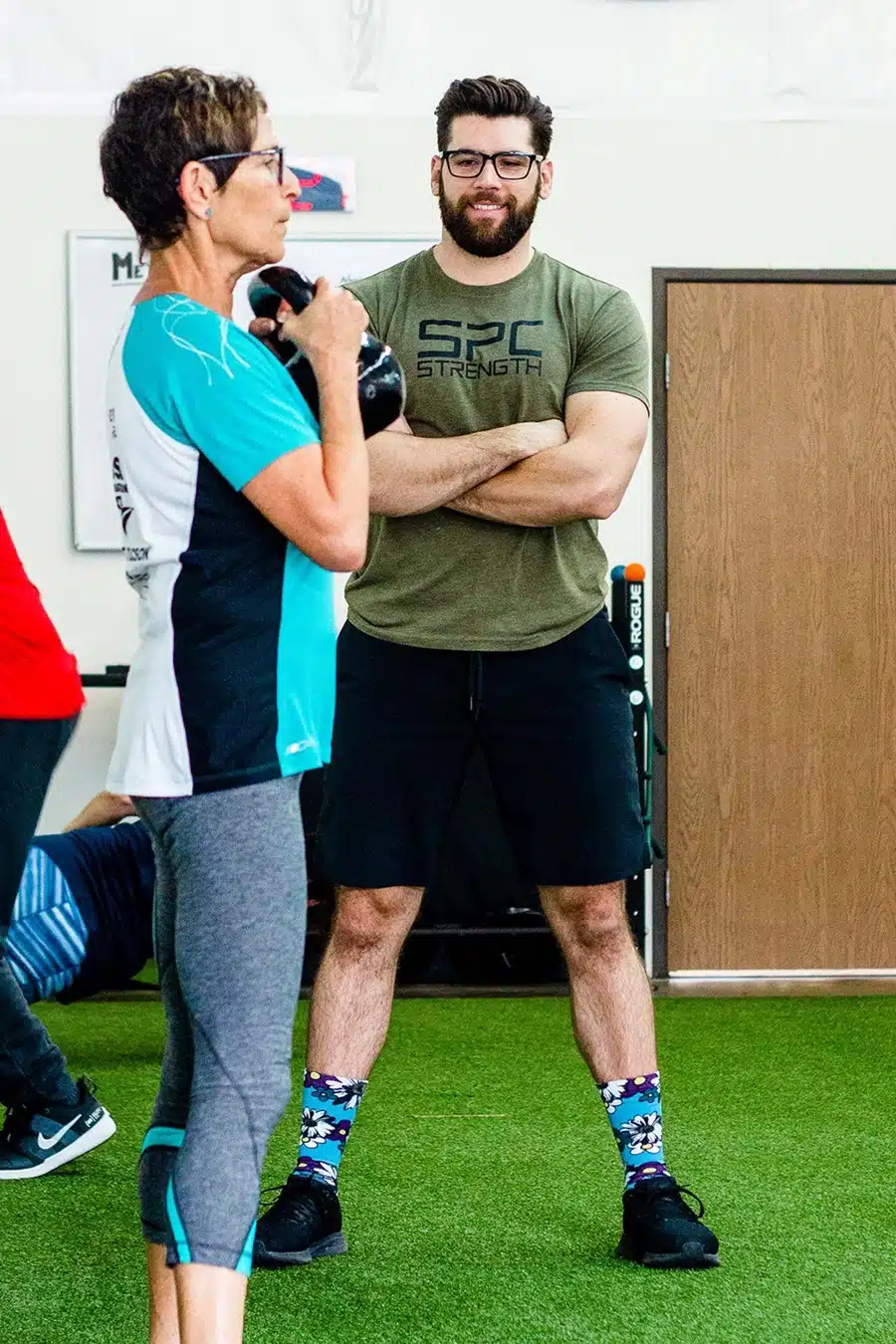At Smith Performance Center, we focus on the main problem of the client.
This focused process revealed a recurring set of problems that many of our clients experienced. This led to an overall process we call SPC Phases. There are 5 phases for our clients at Smith Performance Center: Diagnostics and Home Plan Development, Symptom Stabilization, Activity Progression, Exercise, Maintenance, and Monitoring, and Maximize Performance. Each phase consists of a main problem, the common challenges experienced by the clinician, coach, and client when managing your problem, steps to achieve along the way, and a promise for what you get when you complete the phase.
We believe a clear process matters to your overall success.
We want to explain the problem, common challenges, steps to achieve, and the promise.
The Focus On A Problem
The focus of a phase is the problem being solved.
In Diagnosis and Home Plan Development, we do not know what tissue or system is causing the problem; we just know that one exists and is typically causing pain. As a client, information on what to do becomes overwhelming. You often seek out as many sources for help as possible, reading articles on Google about ‘the number one way to make your back pain go away’ or buying a massage gun to help release the tight muscles. You try recommendations from friends and eventually start seeing medical professionals.
The cause of the symptoms is usually not diagnosed.
The pain continues to linger and you stop the painful activity believing this will let your body heal.
The time off from the activity does not seem to help.
At the point you walk in our door, more information and a handful of Amazon products that have not led to the desired outcome.
This is clearly a problem.
Not everyone responds to the same treatment. Not all injuries present the same way in different individuals. Your day-to-day activities are different from your friends, which means your triggers are likely different. Your diagnosis cannot be assumed – it needs to be confirmed through treatment and a plan.
The problems in each phase are different, which leads to different challenges that must be overcome.
If you are interested in a more detailed review of the problem in each phase, check out our article ‘The 5 Big Problems Facing Clients with Pain and Injury Who Want to Get Back to an Active Lifestyle.”
Common Challenges Experienced During The Phase
A challenge is an obstacle that must be overcome in the phase in order to reach the phase promise.
Challenges are common. No one comes in with the same presentation (this means how your pain presents, what triggers the symptoms, the exam findings, etc.), even with the same injury, but the challenges are consistent. For example, in phase 3 Activity Progression, we often see symptoms return as individuals increase their exercise.
Here is why.
Imagine yourself as a runner. You had a nagging Achilles tendon pain that stopped you from running for about 6 months. In phase 1, we identified it as an insertional Achilles tendinopathy. The physical therapist reduced the pain with tissue techniques and trigger management. In phase 2, you learned to do the tissue techniques yourself and started a gradual running program (this is often where rehab ends in many clinics due to insurance). We even started working on quad weakness which was not apparent until we did a step-down test.
In phase 3, you want to return to your speed work, which is what caused the original injury. We have to target your tissue capacity and build a speed program around that. The challenge is that we cannot fully return to speed work based on your exercise capacity because the tissue capacity is not equal to it.
If you have ever gotten rid of your pain but keep having it return over and over again when you go back to exercise, you may be failing due to this challenge.
Our team calls this specific challenge the rehab standard.
Read more about the rehab standard, tissue capacity, and exercise capacity: The Injury Types That Are Mismanaged During Activity Progression and The 5 Most Useful Tools for Progressing Your Workouts After an Injury.
Challenges are the obstacles that cause most people to suffer with a solvable problem, but are often not straightforward and require a strategy to overcome.
Steps to Achieve
The journey to the life you want can take time.
The lack of visible progress can be discouraging. In order to support our journey to the overall goal in a phase, we have broken it up into steps. These steps help us know we are progressing in the right direction and solving the right problem. We often see rehab and fitness professionals address issues that are not focused on the right problem. So if we do not understand what is causing your pain when you walk through the door, we want to focus on getting a workable diagnosis.
In comparison, if we know your problem but you stink at doing your home plan, we know the focus is on building your skill set.
The steps work very closely with our challenges.
If we cannot check off a step, then we know there is a challenge that needs to be answered.
Here is an example. Our physical therapists want to be able to replicate your symptoms in the session. If that is not possible, we want to see the painful activity. If we cannot use either, then we are dealing with a feedback loop challenge.
The Phase Promise
The promise we offer is what you achieve when you complete a phase.
This is not your individual goal. Instead, it is a clear, consistent promise of what we are trying to achieve with the plan as a whole. During your journey to an active, healthy lifestyle, there are numerous places to get off track. Our team sees this when a patient comes who has had relief in session with another medical provider, but never learned the tools to do it on their own. Or we see it when a client fails to stay active despite having a gym membership.
When you get to the end of the phase, there is a clear outcome that we are promising you will receive.
The SPC Phases in Action
Our team believes a process matters.
We have a clear process for solving the problems holding you back. We are not focused on a single treatment or stuck to a single plan. Our team adapts based on what happens in the real world. There will be challenges to overcome, but we would love to help you on the journey.







